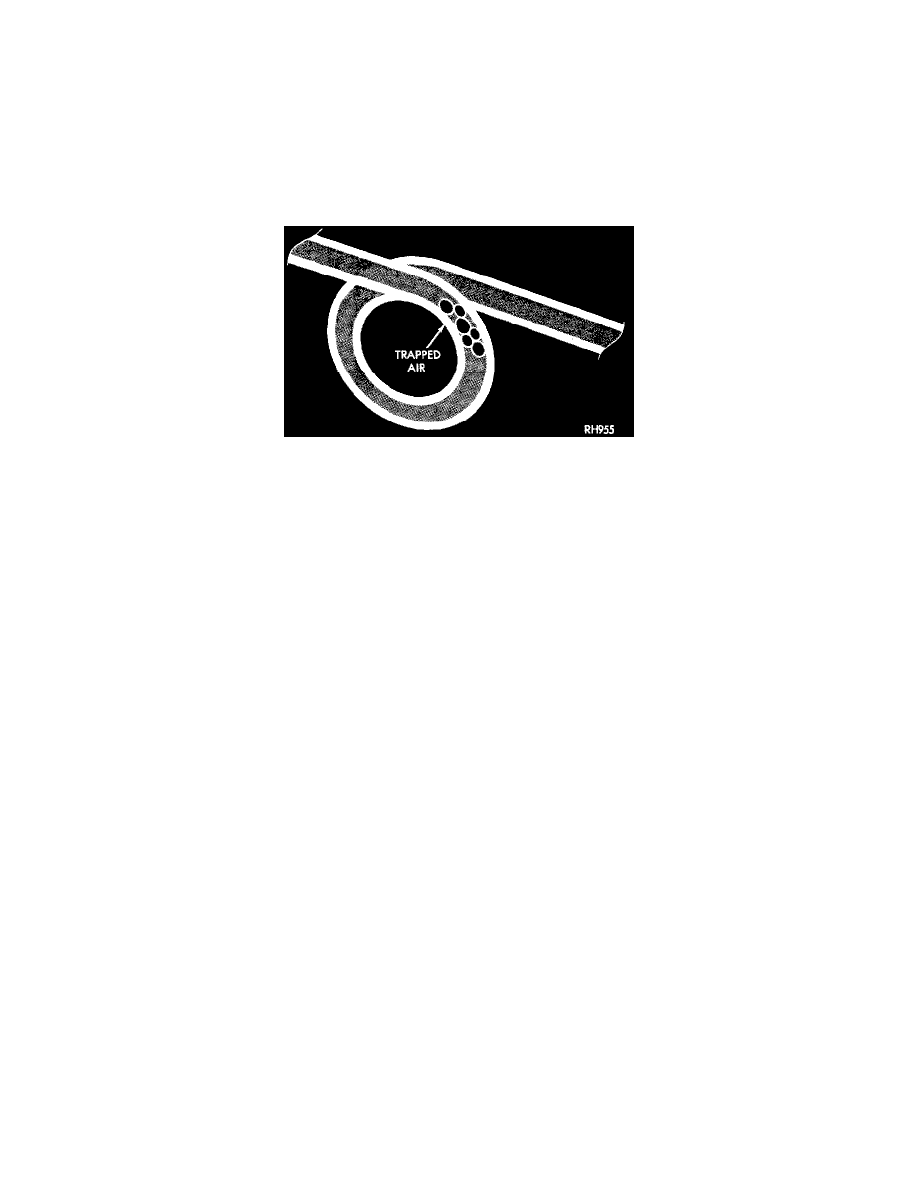Voyager V6-201 3.3L VIN R SMFI (1997)

NOTE: It is not necessary to bleed the ABS: Hydraulic Control Unit (HCU) after replacing the master cylinder. But, the base brake hydraulic
system must be bled to ensure no air is entered the hydraulic system when the master cylinder was removed.
Manual Bleeding
CAUTION:
-
This bleeding procedure is only for the vehicle's base brakes hydraulic system. For bleeding the antilock brakes hydraulic system, perform the
ABS procedure.
-
Before removing the master cylinder cover, throughly clean the cover and master cylinder fluid reservoir to prevent dirt and other foreign matter
from dropping into the master cylinder fluid reservoir.
Air Trapped In Brake System
-
When bleeding the brake system, some air may be trapped in the brake lines or valves far upstream, as much as ten feet from the bleeder screw.
Therefore, it is essential to have a fast flow of a large volume of brake fluid when bleeding the brakes to ensure all the air gets out.
NOTE:
-
Correct manual bleeding of the brakes hydraulic system will require the aid of a helper.
-
To adequately bleed the brakes using the manual bleeding procedure the rear brakes must be correctly adjusted. Prior to the manual bleeding of the
brake hydraulic system, correctly adjust the rear brakes.
PROCEDURE
The following wheel sequence should be used when bleeding the brake hydraulic system. The use of this wheel sequence will ensure adequate
removal of all trapped air from the brake hydraulic system.
(1st) Left Rear Wheel - (2nd) Right Front Wheel - (3rd) Right Rear Wheel - (4th) Left Front Wheel.
1. Pump the brake pedal three or four times and hold it down before the bleeder screw is opened.
2. Push the brake pedal toward the floor and hold it down. Then open the left rear bleeder screw at least 1 full turn. When the bleeder screw
opens the brake pedal will drop all the way to the floor.
3. Release the brake pedal only after the bleeder screw is closed.
4. Repeat steps 1 through 3, four or five times, at each bleeder screw in the required sequence. This should pass a sufficient amount of fluid to
expel all the trapped air from the brake system. Be sure to monitor the fluid level in the master cylinder, so it stays at a proper level so air will
not enter the brake system through the master cylinder.
5. Perform a final adjustment of the rear brake shoes and then test drive vehicle to be sure brakes are operating correctly and that pedal is solid.
